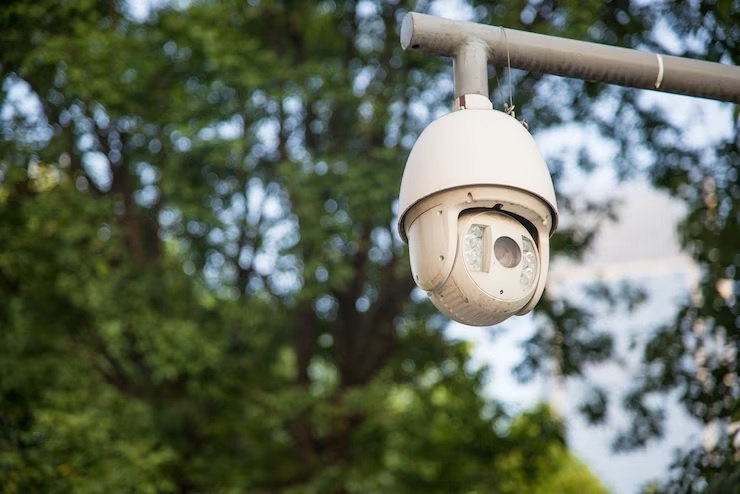Tech advances warrant surveillance upgrade
Nguyen Trung Kien, CEO of smart camera solutions group Pavana, revealed that the Asia-Pacific region accounted for one-third of global camera demand in 2022, based on statistics from Market Data Forecast.
 |
| Tech advances warrant surveillance upgrade, illustration photo/ Source: freepik.com |
“Specifically in Vietnam, the annual growth rate of the surveillance camera market has reached 12 per cent. Beyond domestic use, these devices are increasingly deployed in public security infrastructure,” he said at a conference focusing on Vietnamese-made security camera devices held late last month.
However, most of the cameras utilised domestically originate from abroad. According to Pavana data as of October 2022, Vietnam imports an average of five million surveillance cameras annually, with over 90 per cent bearing Chinese brand names.
Kien expressed grave concerns over this trend, highlighting the inherent risks to data and information security. “Confidential business information, manufacturing technologies, and research and development insights could potentially be compromised if not adequately protected,” he explained.
Ngo Tuan Anh, CEO of cybersecurity firm SCS, added that there have been several reported instances of data breaches linked to cameras both globally and in Vietnam.
For instance, sensitive footage from 50,000 cameras, some of which were from Southeast Asian households, surfaced on the dark web in 2020. Furthermore, imagery from 150,000 Verkada cameras was leaked in 2021 due to the compromise of a system administrator’s account.
“Particularly, in Vietnam, numerous Hikvision camera users faced hacker intrusions and received on-screen notifications stemming from a severe, unpatched vulnerability,” Anh said. “No system can be fully secure. Hence, it is imperative to have robust monitoring to detect anomalies promptly, allowing immediate responses to minimise risks.”
He also mentioned that a large proportion of these breaches arise from users setting weak or predictable passwords. However, there are also multiple instances caused by inherent vulnerabilities in the cameras, their connectivity systems, operating procedures, or user applications.
Anh also underlined the need for robust security across all these areas, stating that everything from hardware manufacturing to firmware development, connectivity, cloud storage, and data processing requires dedicated security solutions.
Highlighting the importance of an end-to-end security process, Kien of Pavana proposed not only scrutinising the production location but also other facets like electronic circuit design, software control, transmission, server management systems, and user protection systems.
“These processes should be based in Vietnam for improved control. Having designed and manufactured products for several US, European, and Japanese camera brands, we believe that having more Vietnamese-made products is not that challenging. Yet, the key is achieving a large scale to ensure cost-effectiveness,” Kien stated.
He also advised domestic producers to focus on AI-enabled camera designs to differentiate their products, competing on quality and features rather than just price.
Nguyen Thanh Tuyen, deputy head of the ICT Department at the Ministry of Information and Communications, emphasised Vietnam’s need for domestic digital technology platforms and products, including security cameras.
“The ministry recognises the paramount importance of ensuring data security for surveillance cameras. Moving forward, we will review and establish standards for these devices, ensuring that products on the market meet safety and security standards,” said Tuyen.
According to market research and consulting firm 6Wresearch, the Vietnamese video surveillance market is poised for growth, predominantly driven by government and transportation initiatives. In 2022, these two sectors alone dominated the market revenues. This substantial contribution is linked to a $93 million governmental endeavour, launched in 2021, dedicated to enhancing traffic monitoring on national expressways and highways through to 2025.
The market is set to grow at a compound annual growth rate of 12.6 per cent from now to 2029, thanks to key infrastructure plans.
 | MoIT and Samsung launch collaborative Smart Factory Development Project The Ministry of Industry and Trade (MoIT), in partnership with Samsung Vietnam, has initiated Phase 1 of the Smart Factory Development Cooperation Project for 2023. |
 | Smart city training programmes seek to enhance capacity for future development While more than 40 cities and provinces across the country have smart city operation centres, many experts believe that urban development progress still falls short of expectations and call for better training programmes for future management. |
What the stars mean:
★ Poor ★ ★ Promising ★★★ Good ★★★★ Very good ★★★★★ Exceptional
Related Contents
Latest News
More News
- EVN launches major power infrastructure projects nationwide (December 19, 2025 | 18:17)
- VAL inaugurates second production line to meet domestic animal feed demand (December 19, 2025 | 16:37)
- Sun Group pioneers urban tram system in Phu Quoc (December 19, 2025 | 15:00)
- Seven major projects launched to drive Hanoi’s next growth phase (December 19, 2025 | 14:00)
- Securing capital and efficiency for Vietnam’s 2026-2030 growth ambitions (December 17, 2025 | 10:00)
- Vietnam bucking trend in the global M&A landscape (December 16, 2025 | 14:20)
- HDS Summit spotlights Vietnam’s rising role in regional supply chains (December 16, 2025 | 08:00)
- Kolon signs $48 million airbag supply deal with Autoliv (December 15, 2025 | 18:14)
- National Assembly approves Vinh–Thanh Thuy expressway project (December 15, 2025 | 18:02)
- Quang Tri green-lights $1.59 billion LNG-fired power project (December 15, 2025 | 17:59)

 Tag:
Tag:






















 Mobile Version
Mobile Version